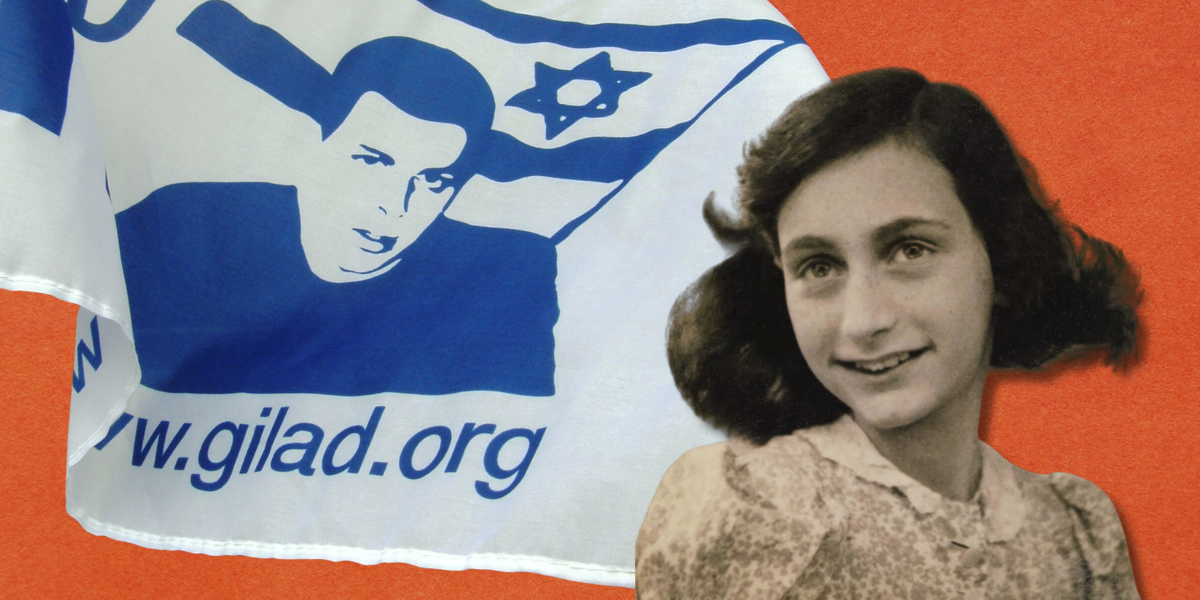Hadassah
President's Column
Connecting Anne Frank and Gilad Shalit

Many of us have seen parents or grandparents live into their nineties. And though the end of life is often hard, I think most would agree that the great leap forward in human lifespans over the past century has been a blessing. But sometimes an observable reality—like longevity—collides with a sudden discovery, leaving us in search of meaning.
That’s how I felt when I noticed that Anne Frank would have turned 94 this month, on June 12. Had she survived World War II, the Jewish girl whose courage, insight and death did so much to teach the world about the Holocaust—and whose diary has been in circulation for 75 years—might have lived to see this day. It’s a realization that combines the anguish over a young life lost with the weight of all the days and years that might have been.
The idea of a happier outcome is not far-fetched. Consider the fate of Hannah Pick-Goslar, Anne Frank’s best friend in Amsterdam. They attended the 6th Montessori School and the Jewish Lyceum together; they were also briefly reunited in the Bergen-Belsen concentration camp. But Hannah survived the war and moved to Israel, where she passed away last year at the age of 93. (Their relationship is the focus of a new book, My Friend Anne Frank: The Inspiring and Heartbreaking True Story of Best Friends Torn Apart and Reunited Against All Odds, by Hannah Pick-Goslar with Dina Kraft, just published by Little, Brown.)
Anne Frank’s birthday coincides with another date that reflects the story of a young Jewish life in peril. Later this month we will mark the 17th anniversary of Gilad Shalit’s abduction by Hamas. Just 19 at the time of his capture, the young Israeli soldier was held in isolation in Gaza and even denied visits from the Red Cross for five years before his release—in exchange for 1,027 Palestinian prisoners.
Putting these key dates involving Anne Frank and Gilad Shalit together is instructive. Young Anne dreamed of becoming a writer, never knowing that she would be hailed as an author for all time. In freedom, Gilad Shalit has done his best to keep a low profile in a small country where everyone saw him as a member of their extended family; the nation celebrated collectively when he got married in 2021. As for the low profile, he also took a page from Anne Frank by becoming a sports writer.
My takeaway from putting Anne and Gilad together is that it proves only what I already know: That there is no comparison between a world where Jews have sovereign power—which includes an army—and a world where we do not. Nothing is more precious than our youth, and after 2,000 years of vulnerability, after the murder of 1.5 million Jewish children in World War II, Israel guarantees that love for our children is backed by a nation state.
Rescuing Jewish youth is, of course, part of Hadassah’s mission. Henrietta Szold took responsibility for Youth Aliyah, which began with Jewish parents in Germany sending their children to Palestine to get them out of harm’s way. Our youth villages continue to protect and educate immigrant and at-risk Israeli youngsters today, including many sent to safety by parents in Ukraine and Russia. In the Jewish state, it is not just the army that offers protection but the entire society.
Israel is the difference between a young Jewish life threatened in the 1930s and today. The loftiest goal of the state is to realize the fullest development of Jewish civilization. The most basic goal is self-defense.
Never again can the Jewish people be without national sovereignty. Nor can we allow differences to undermine the future of the Jewish state. Debate in a free society is healthy, but everyone’s life depends on maintaining a unified purpose.
There’s no secret formula for Jewish unity. But a good place to start is by thinking of Anne and Gilad.










 Facebook
Facebook Instagram
Instagram Twitter
Twitter
Leave a Reply